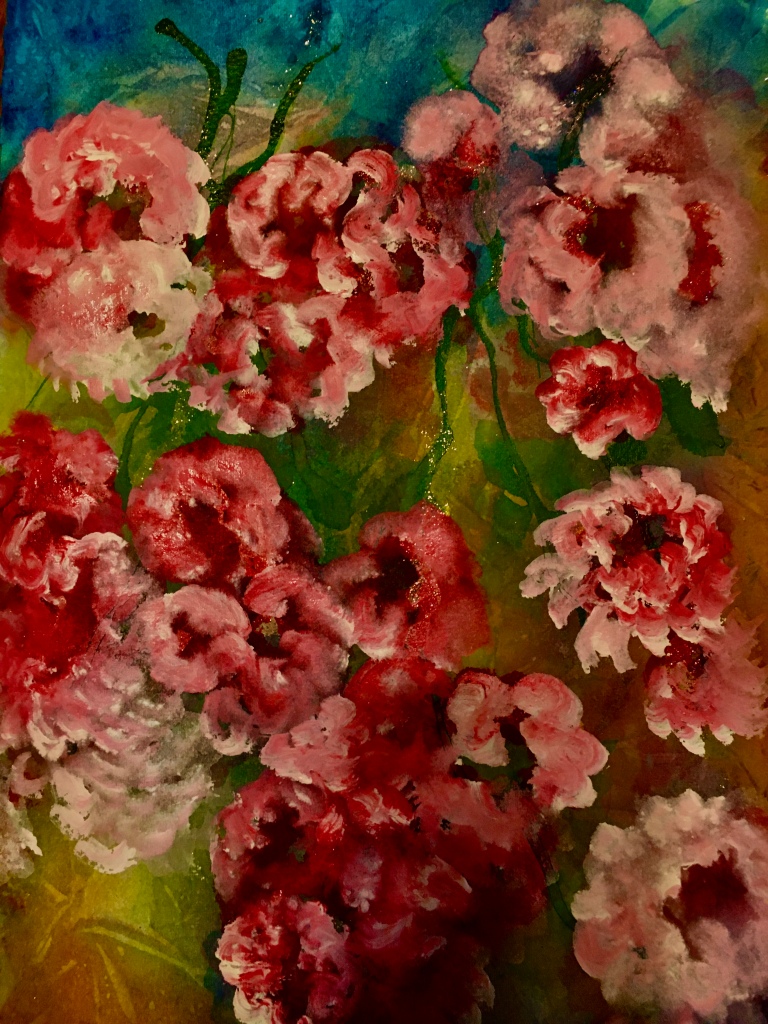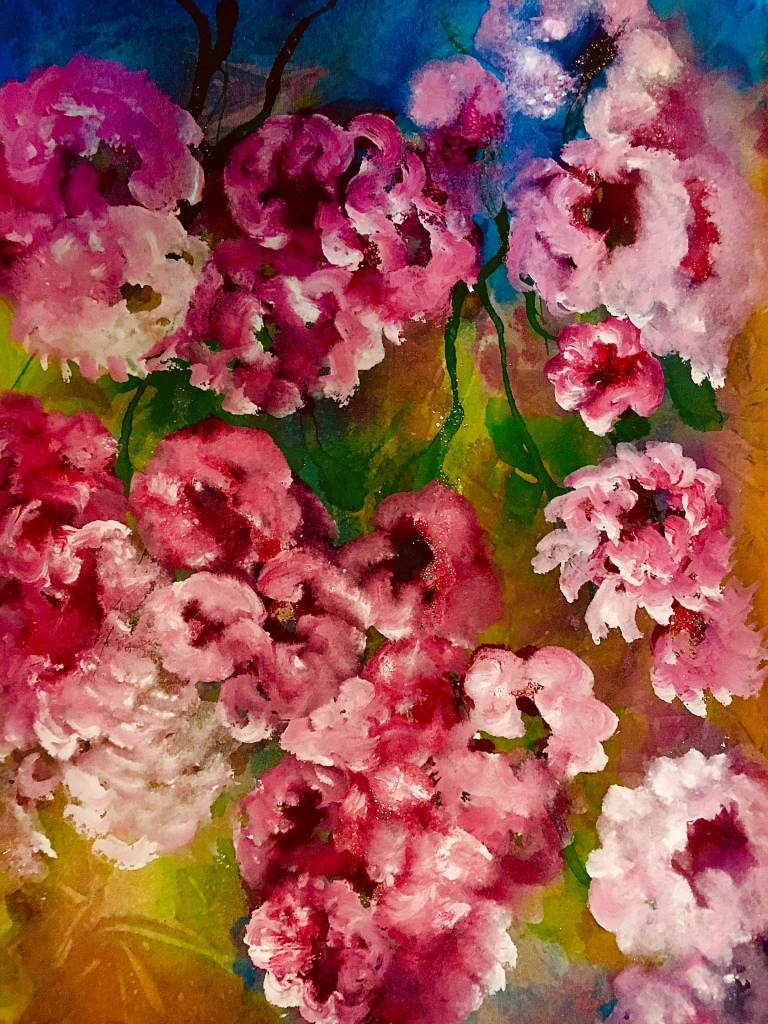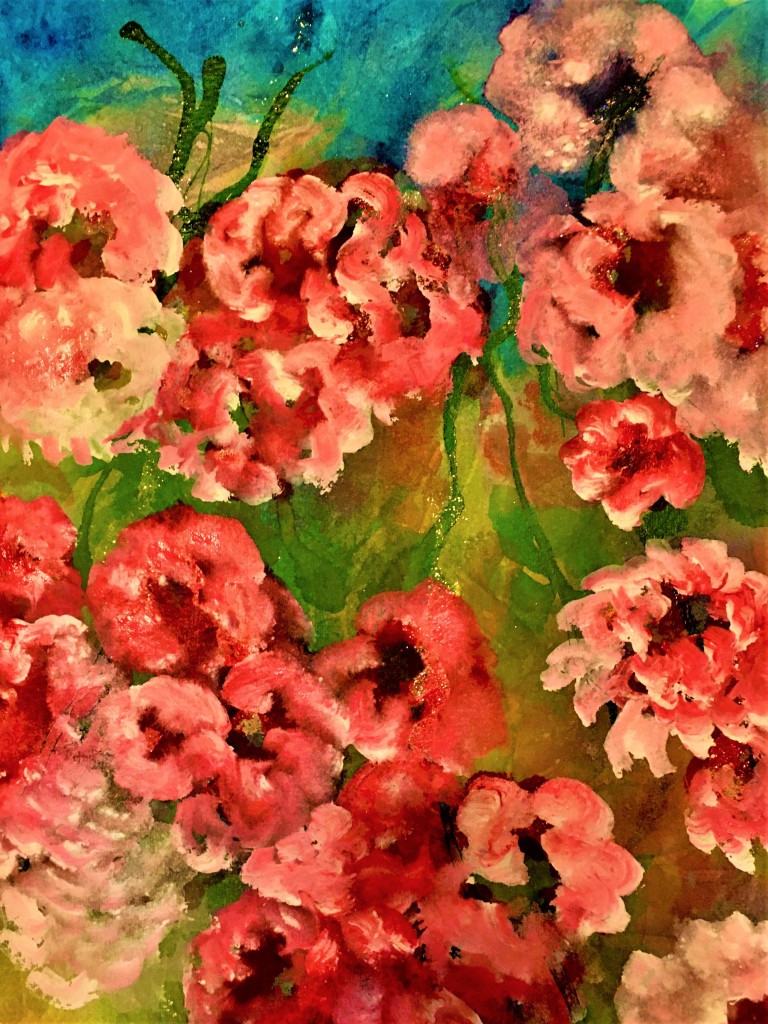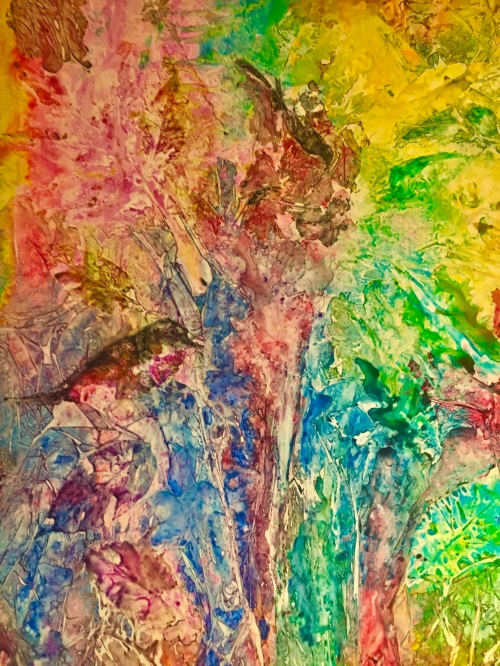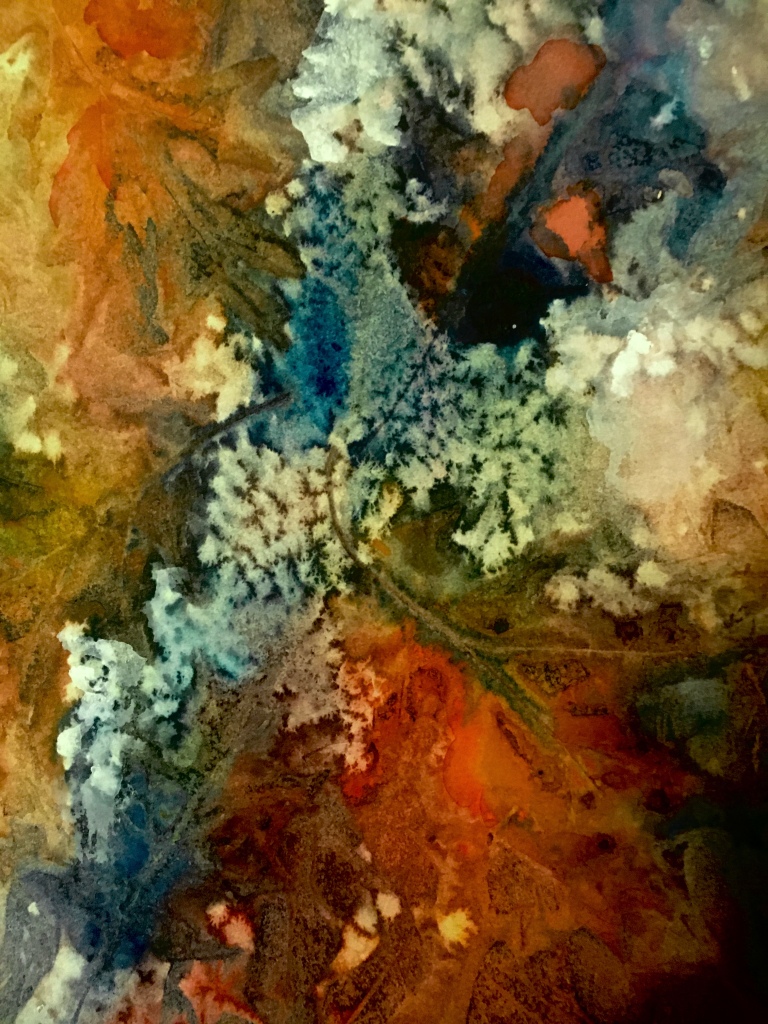




British fine artist Ann Blockley advocates picking an art subject about which one is passionate, and then building a file of photos, sketches, word descriptions, etc. dealing with the topic. Eventually this resource will continue to seep in and ultimately create significant art.
I love the concept of building the resource file. One subject very dear to me, a place where I spent some beautiful university and early marriage years, is the state of Colorado, So I have been building a file of pleasant memories, focusing on that drop dead gorgeous part of the USA.
Specifically prominent in my memory is the environs of Colorado Springs and Manitou Springs—where my husband, our first child Laura, and I lived in 1956. Our home was four rows of cottages up from Canyon Avenue on a foothill looming over stately Victorian mansions, where the wealthy of the late 1800s and early 1900s gathered to drink the allegedly-healthful waters of Manitou Springs.
In 1956, Colorado Springs was a sleepy Southwestern town of about 27,000 people—only slightly disturbed by the presence of the military, of which my husband was a part at Fort Carson. Construction of the Air Force Academy began about the time Joe left the army for civilian life, when we returned to our native Wisconsin.
When we lived in Manitou Springs we were a young family, and we had only a primitive box camera in our limited stash of possessions—plus just a bit of extra cash for buying film. I have only a few snapshots from that era, and naturally they are closeups of Laura—our darling first child.
So to resurrect the familiar scenic views of our neighborhood, I resorted to GOOGLE, and “he/she/or it” referred me to everything I could recall and more—views of Williams Canyon, The Cave of the Winds, the charming adobe houses and motels along Colorado Avenue in Old Colorado City, and of course The Garden of the Gods which we could see from our high-on-a-foothill bathroom window in Manitou Springs.
I printed out a stack of the online photos for my file, and added a string of my own sketches, rough watercolor and colored pencil renderings, plus word impressions—samples of which are pictured above.
The above drawing of a building is noteworthy—not my crude sketch but the history of the Colorado Springs area landmark, a mini castle called Glen Eyrie. Glen Eyrie was built in 1871 by General William Jackson Palmer—the founder of Colorado Springs. “The Glen”, as the castle is frequently called, is set on 750 acres. There are 97 rooms of scenic Old World ambience, now tastefully refurbished with every modern convenience.
I recall this building to be dark and mysterious in 1956, and I always wondered about it when we drove by. Whether or not refurbishing by new owners as of 1953 had begun when we lived in the neighborhood of The Glen, I cannot recall.
But if you GOOGLE “Glen Eyrie” as it is today, as well as it was before remodeling, you will see an amazing transformation in keeping with the castle’s Old World charm. The “new owners of 1953” were and still are a Christian Campus and Community Ministry, THE NAVIGATORS* with a combined emphasis on evangelism and Biblical discipleship.
Glen Eyrie serves as a year-round NAVIGATORS’ conference center, especially meaningful to me as two of our six children were successfully “navigated” through the University of Wisconsin system via the NAVIGATORS. Both our son, Karl, and daughter, Martina, have spent fruitful times at Glen Eyrie.
Thus my art file is building. I am still waiting for some fantastic art to emerge, but oh what fun anyway! Thank you, Ann Blockley.
Meanwhile, since all of Colorado and New Mexico are special to me, I do have a backlog of paintings inspired by vacations in those states. Come along and see for yourself.





And more!
Margaret L. Been — November 14th, 2018
*THE NAVIGATORS MINISTRY was founded by an evangelist, Dawson Trotman (1906-1956). Trotman died while rescuing a young girl from drowning in a water-skiing accident, in New York State. Since then, the ministry which Dawson Trotman began has resonated world-wide. The Navigators Ministry has been used by God to save countless individuals from spiritual drowning.
A beautiful picture of the truth of Psalm 116:15, “Precious in the sight of the Lord is the death of His saints.”
Read Full Post »

